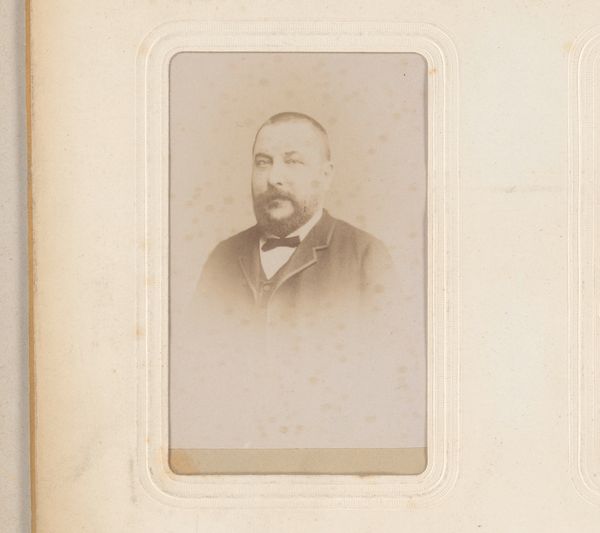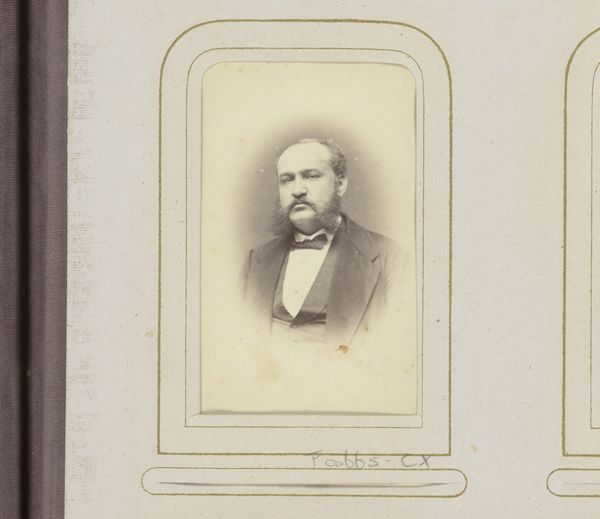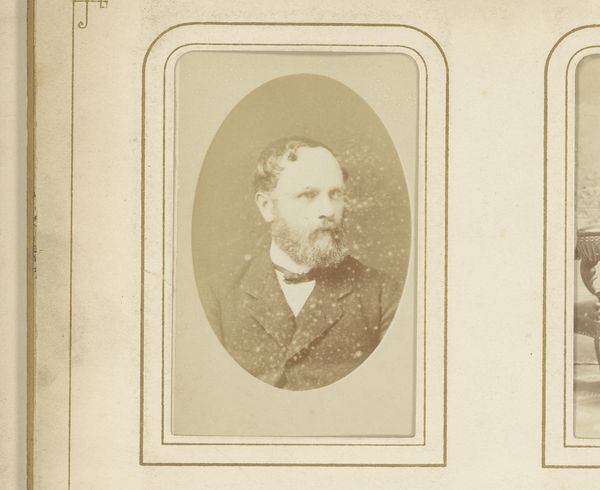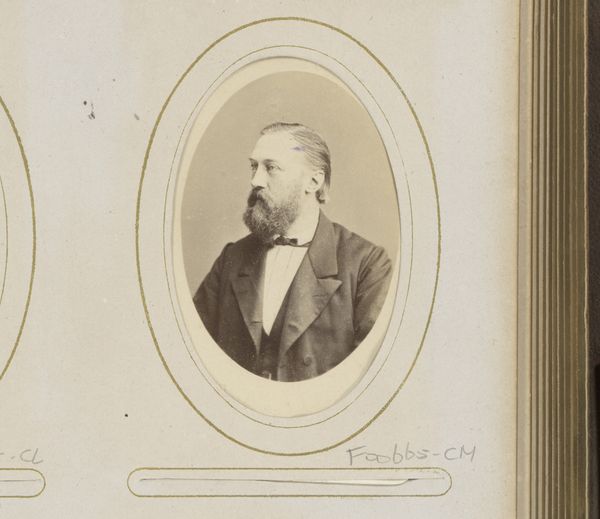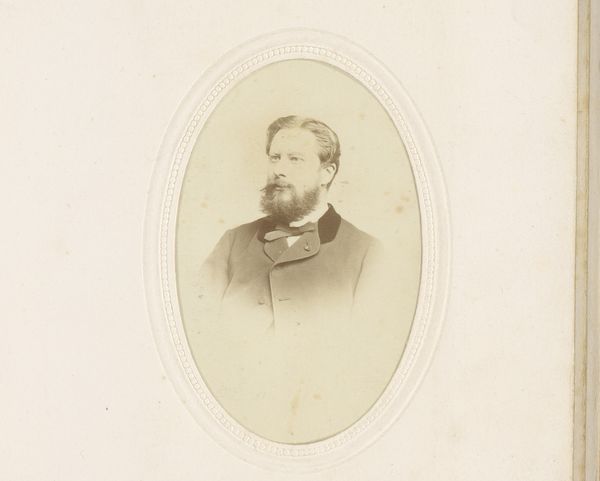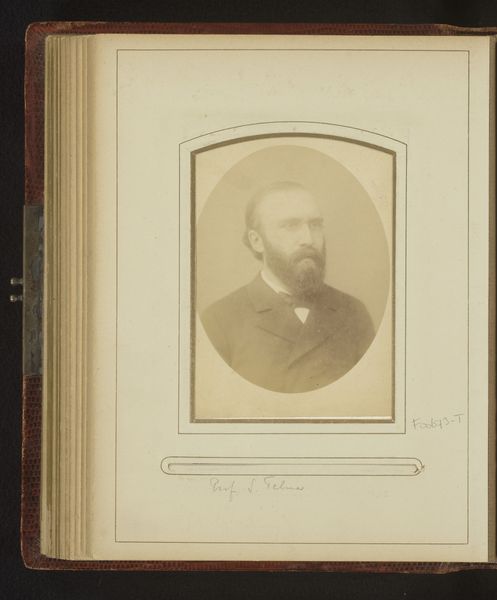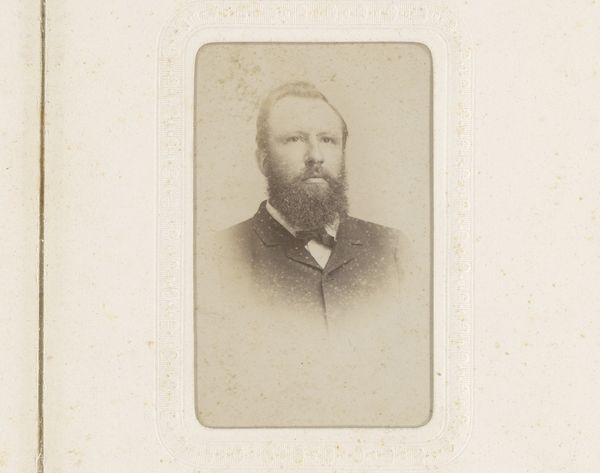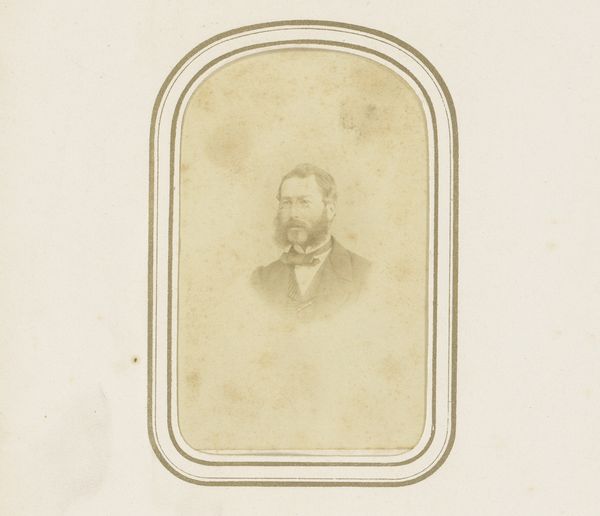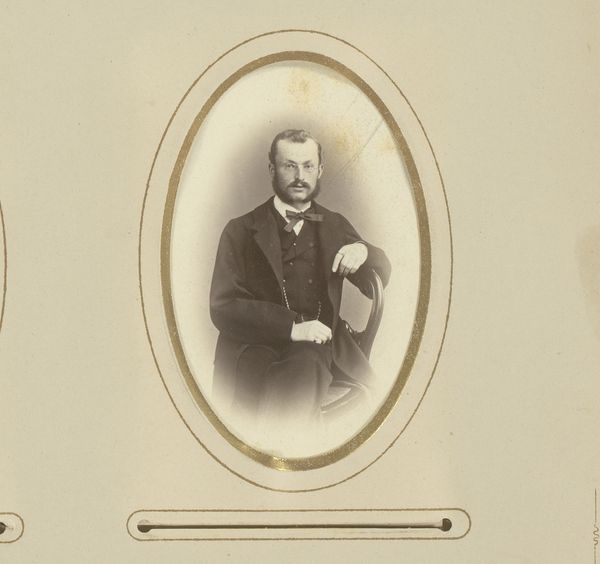
photography
#
portrait
#
16_19th-century
#
photography
#
19th century
Dimensions: height 85 mm, width 52 mm
Copyright: Rijks Museum: Open Domain
Curator: Looking at this sepia photograph, I get a feeling of a sort of gentle introspection. What about you? Editor: Yeah, he's definitely lost in thought, isn't he? I see a solid citizen of his time. This image by Ghémar Frères, housed here at the Rijksmuseum, is simply titled 'Portret van een man met snor en baard', or 'Portrait of a man with mustache and beard,' created sometime between 1860 and 1894. Curator: It is striking how, during that era, portraiture solidified the bourgeois identity—linking personal gravitas with societal role. This photograph subtly communicates volumes about class and masculinity. His direct gaze suggests a negotiation with the emergent middle-class ideal. How much control did the subject really have over that projection though? Editor: That's true, but what strikes me most are the little imperfections on the photograph. It almost makes me feel like I'm holding a small piece of the past, something tangible. The light seems to emanate from within the image, softening all the details. He seems dignified, but there's a certain… weariness there. Curator: Yes, that weariness speaks to something important. Photography wasn't just about surface appearance. The image would convey a controlled representation aligned with 19th-century values while, at the same time, we read this slight hint of his personal experience, perhaps some melancholy or even dissent within the constraints of photographic and societal expectations. Editor: It also makes me think about the stories this photo could tell, or perhaps more accurately, the stories that are forever lost. This was likely someone's valued keepsake. It feels intimate even with the sitter consciously posing. What does it mean that this is just floating around for anyone to consider now? Curator: It's that very question of intimacy and representation which fascinates me. It reminds us of how portraits have always functioned as careful performances of self, mediating public expectation with individual identity, something that obviously remains deeply relevant today, though the means of doing so have drastically shifted with our current social media ecosystem. Editor: I like that. It encourages us to think beyond the image itself, beyond just aesthetics or the person represented and recognize this image as an artifact of a particular cultural moment. Curator: Exactly. I’m finding it particularly haunting now.
Comments
No comments
Be the first to comment and join the conversation on the ultimate creative platform.
